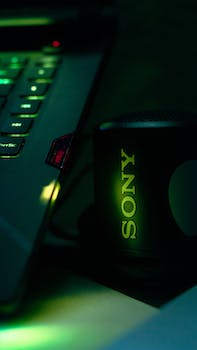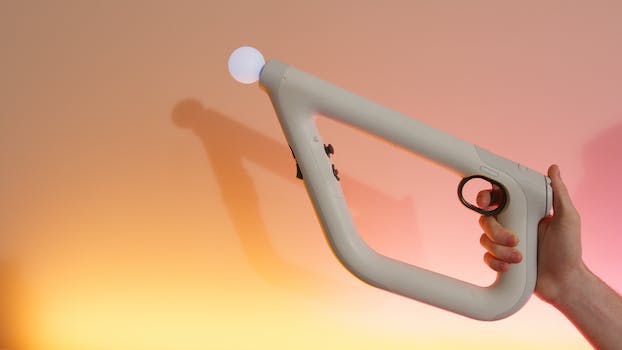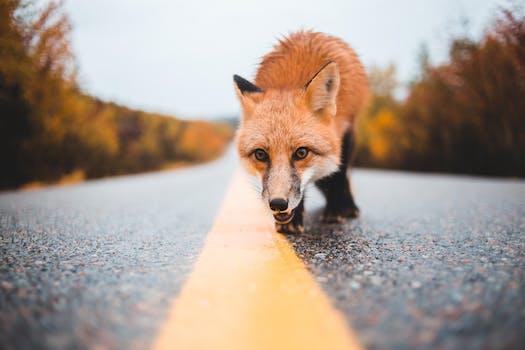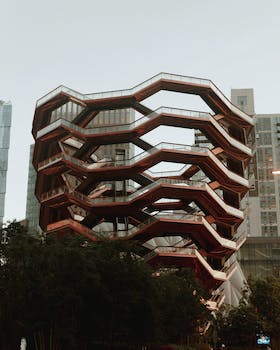

-
Table of Contents
Unleash your creativity with Introduction to Pixel Art: A Beginner's Guide.
Introduction
Introduction to Pixel Art: A Beginner's Guide is a comprehensive resource designed to introduce individuals to the world of pixel art. This guide provides an overview of pixel art, its history, and its applications. It also covers the fundamental techniques and tools required to create pixel art, including pixel grids, color palettes, and pixel manipulation software. Whether you are a complete beginner or have some artistic experience, this guide aims to equip you with the knowledge and skills needed to start creating your own pixel art masterpieces.
The History and Evolution of Pixel Art
Pixel art is a unique form of digital art that has gained popularity in recent years. It is characterized by its use of small, square-shaped pixels to create images. While pixel art may seem like a relatively new phenomenon, its roots can be traced back to the early days of computer graphics.
The history of pixel art can be traced back to the 1960s when computer graphics were in their infancy. At this time, computers were not capable of displaying complex images or colors. Instead, they were limited to displaying simple shapes and patterns using a grid of pixels. These early computer graphics were often used for scientific and mathematical purposes, rather than for artistic expression.
As technology advanced, so did the capabilities of computer graphics. In the 1970s and 1980s, video game consoles and home computers became more popular, and with them came the rise of pixel art. Video game developers and artists began using pixels to create characters, backgrounds, and objects for their games. The limited resolution and color palette of these early systems forced artists to work within strict constraints, resulting in the distinctive pixelated look that is now synonymous with retro gaming.
One of the most iconic examples of early pixel art is the game "Space Invaders," released in 1978. The game featured simple, blocky aliens that moved across the screen, and a spaceship controlled by the player. The graphics were created using a grid of pixels, with each pixel representing a single point of color. Despite its simplicity, "Space Invaders" became a massive success and helped popularize pixel art as a viable art form.
Throughout the 1980s and 1990s, pixel art continued to evolve alongside advancements in technology. As computers and gaming consoles became more powerful, artists were able to create more detailed and colorful pixel art. Games like "Super Mario Bros." and "The Legend of Zelda" showcased the potential of pixel art, with their vibrant and imaginative worlds.
However, as technology progressed, pixel art began to fall out of favor. The introduction of 3D graphics and high-definition displays made pixel art seem outdated and obsolete. Many artists and game developers abandoned pixel art in favor of more realistic and immersive visuals.
Despite this decline, pixel art never truly disappeared. In recent years, there has been a resurgence of interest in pixel art, fueled in part by nostalgia for retro gaming and a desire for simpler, more accessible art styles. Indie game developers, in particular, have embraced pixel art as a way to create unique and visually striking games.
Today, pixel art is not only used in video games but also in various forms of digital media, such as illustrations, animations, and even virtual reality experiences. Artists continue to push the boundaries of what can be achieved with pixels, creating stunning and intricate works of art.
In conclusion, pixel art has a rich history that dates back to the early days of computer graphics. From its humble beginnings as a simple grid of pixels, it has evolved into a vibrant and versatile art form. Whether you're a fan of retro gaming or simply appreciate the unique aesthetic of pixel art, there's no denying its enduring appeal.
Essential Tools and Techniques for Creating Pixel Art

Pixel art is a unique form of digital art that has gained popularity in recent years. It is characterized by its blocky, pixelated appearance, reminiscent of early video games and computer graphics. Creating pixel art requires a specific set of tools and techniques that are essential for beginners to learn. In this article, we will explore the essential tools and techniques for creating pixel art.
The first tool that every pixel artist needs is a pixel art editor. This software allows artists to create and edit pixel art with precision. There are many pixel art editors available, both free and paid, each with its own set of features. Some popular choices include Aseprite, GraphicsGale, and Pixilart. These editors provide a range of tools such as pencil, brush, eraser, and color picker, allowing artists to create intricate pixel art designs.
Once you have chosen a pixel art editor, it is important to familiarize yourself with its interface and tools. Spend some time exploring the different options and experimenting with the various tools. Understanding how to navigate the editor and use its tools effectively is crucial for creating pixel art.
Color selection is another important aspect of pixel art. Unlike traditional painting, pixel art uses a limited color palette. This limitation adds to the charm and nostalgia of pixel art. When choosing colors for your pixel art, it is best to start with a small palette of around 16 to 32 colors. This will help maintain consistency and prevent your artwork from looking too busy or overwhelming.
Dithering is a technique commonly used in pixel art to create the illusion of additional colors and shades. It involves placing pixels of different colors next to each other to create a blended effect. Dithering can be achieved by manually placing pixels or by using dithering tools available in pixel art editors. Experimenting with different dithering techniques can add depth and texture to your pixel art.
Another technique that is often used in pixel art is anti-aliasing. Anti-aliasing is the process of smoothing the edges of pixel art to create a more polished and refined look. This is achieved by adding intermediate colors along the edges to blend the pixels together. Anti-aliasing can be done manually or with the help of anti-aliasing tools in pixel art editors.
Grids are an essential tool for creating pixel art. They help artists maintain the correct proportions and alignment of their artwork. Most pixel art editors have a grid feature that can be toggled on and off. Grids can be customized to different sizes, allowing artists to work at different levels of detail. Using grids can greatly improve the accuracy and precision of your pixel art.
Finally, it is important to practice and experiment with different techniques to improve your pixel art skills. Pixel art is a versatile medium that allows for endless creativity. Take inspiration from other pixel artists, study their techniques, and try to incorporate them into your own artwork. The more you practice, the better you will become at creating pixel art.
In conclusion, creating pixel art requires a specific set of tools and techniques. A pixel art editor is essential for creating and editing pixel art. Understanding the interface and tools of the editor is crucial. Color selection, dithering, anti-aliasing, and the use of grids are important techniques to master. Finally, practice and experimentation are key to improving your pixel art skills. With dedication and creativity, anyone can become a skilled pixel artist.
Tips and Tricks for Beginners in Pixel Art
Pixel art is a unique form of digital art that has gained popularity in recent years. It is characterized by its blocky, pixelated appearance, reminiscent of early video games and computer graphics. Creating pixel art can be a fun and rewarding hobby, but it can also be challenging for beginners. In this article, we will provide some tips and tricks to help beginners get started in the world of pixel art.
One of the first things to consider when starting out in pixel art is the choice of software. There are many different programs available, both free and paid, that can be used to create pixel art. Some popular options include Aseprite, GraphicsGale, and Photoshop. It is important to choose a program that is user-friendly and has the features you need to create your desired artwork.
Once you have chosen your software, it is time to familiarize yourself with the basic tools and techniques of pixel art. The most important tool in pixel art is the pencil tool, which allows you to draw individual pixels. It is also important to learn how to use the eraser tool effectively, as well as the fill tool for larger areas of color. Additionally, understanding how to use layers can be helpful for organizing your artwork and making changes without affecting the entire image.
When it comes to color selection in pixel art, it is important to keep in mind the limited color palette typically used in this art form. Most pixel art is created using a limited number of colors, often referred to as a "color palette." This limited color palette helps to create the distinctive pixelated look of the artwork. Experimenting with different color combinations and shading techniques can help you achieve the desired effect in your pixel art.
Another important aspect of pixel art is the concept of "dithering." Dithering is a technique used to create the illusion of additional colors by strategically placing pixels of different colors next to each other. This can be a challenging technique to master, but it can add depth and texture to your pixel art.
In addition to the technical aspects of pixel art, it is also important to consider the composition and subject matter of your artwork. Pixel art can be used to create a wide range of subjects, from characters and landscapes to abstract designs. It is important to plan out your composition and consider the placement of elements within your artwork. Paying attention to details such as symmetry, balance, and perspective can help create a visually appealing piece of pixel art.
Finally, one of the best ways to improve your skills in pixel art is to practice regularly. Like any art form, pixel art requires practice and experimentation to develop your own unique style. There are many online communities and forums dedicated to pixel art where you can share your work, receive feedback, and learn from other artists. Taking part in challenges and collaborations can also be a great way to push yourself and learn new techniques.
In conclusion, pixel art is a fascinating and challenging art form that can be enjoyed by beginners and experienced artists alike. By choosing the right software, learning the basic tools and techniques, experimenting with color and composition, and practicing regularly, beginners can develop their skills and create stunning pixel art. So grab your digital canvas and start creating your own pixelated masterpieces!
Q&A
1. What is pixel art?
Pixel art is a form of digital art where images are created using small, square-shaped pixels to form a larger image.
2. What are the key features of pixel art?
Key features of pixel art include the use of limited color palettes, low resolution, and a focus on creating detailed and precise images using individual pixels.
3. How can beginners get started with pixel art?
Beginners can start with pixel art by learning basic techniques such as creating simple shapes, understanding color theory, and practicing pixel placement. There are also various online tutorials and software available to help beginners learn and create pixel art.
Conclusion
In conclusion, the "Introduction to Pixel Art: A Beginner's Guide" provides a comprehensive and accessible starting point for individuals interested in learning pixel art. The guide covers essential concepts, tools, and techniques, allowing beginners to develop their skills and create visually appealing pixel art. With step-by-step instructions and helpful tips, this guide serves as a valuable resource for anyone looking to explore the world of pixel art.












